About me
- What regulates star formation?
- What sets the characteristic mass of stars?
- Why are stars clustered?
- What determines the properties of stellar binaries?
- How is star formation different in other galaxies?
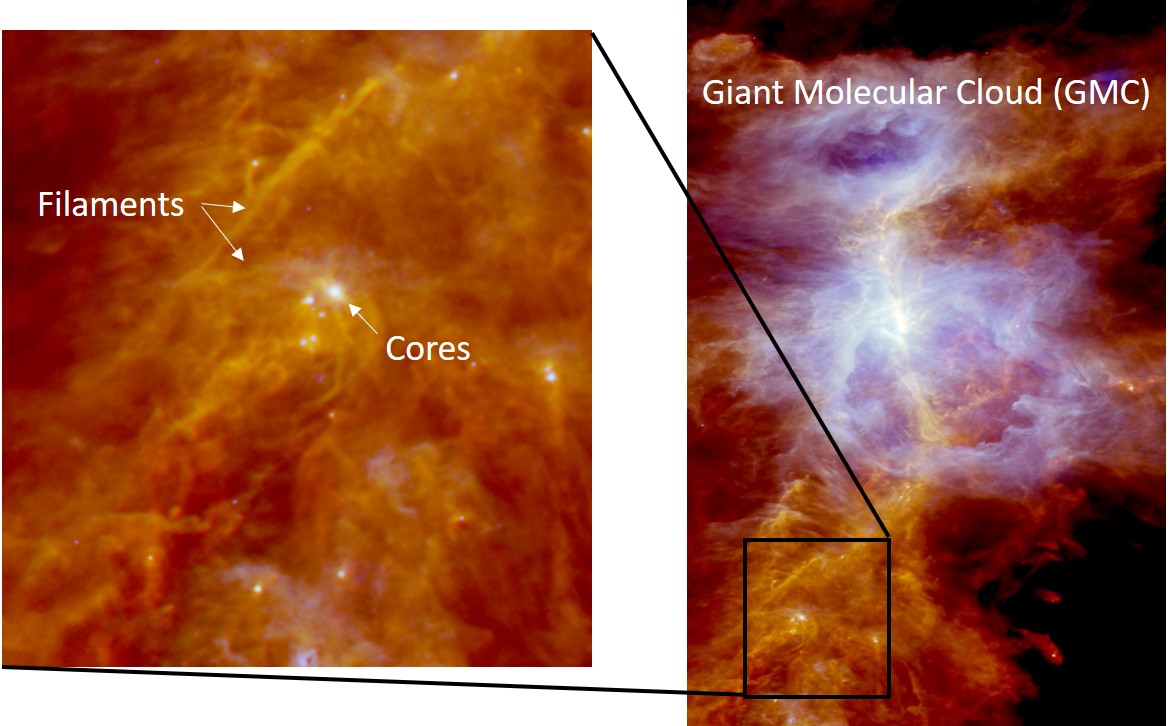
I am a lead developer of the STARFORGE collaboration. The STARFORGE suite are the first ever radiation-hydro simulations that follow the evolution of a giant molecular cloud (GMC) throughout its lifetime while also resolving the formation of individual low-mass stars. Such a dynamic range is necessary to investigate how GMC-scale properties influence star formation and how the process may vary in different galactic environments. Such simulations are also necessary to understand how stellar feedback influences gas dynamics in the cloud (e.g., leading to cloud disruption) and how it affects future SF (e.g., changing the IMF or quenching SF). The modular nature of the simulation will allow me to explore the role each physical process plays. For more information and videos see the STARFORGE website and Youtube.
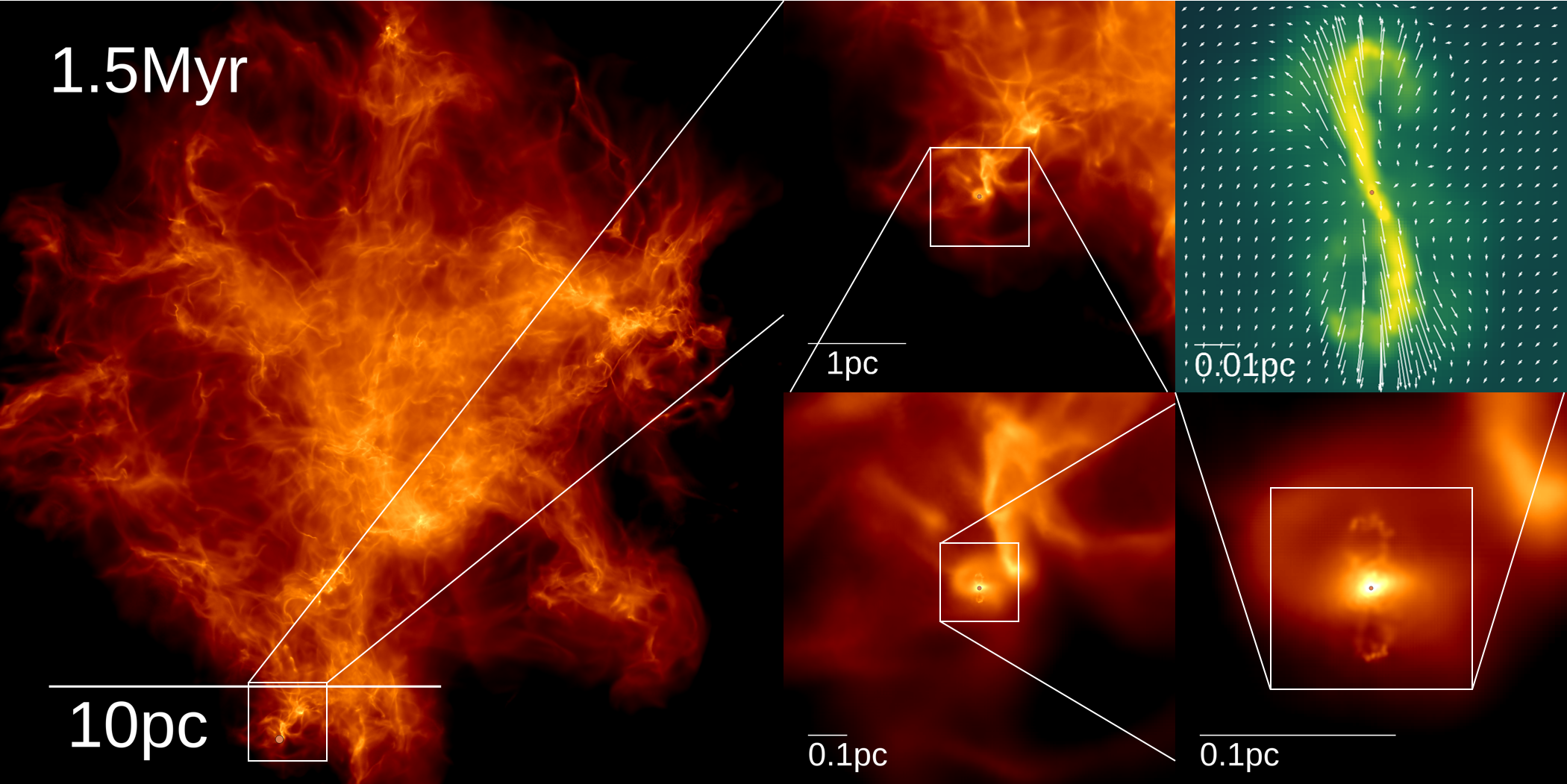
Surface density (left) and line-of-sight velocity dispersion (right) maps of a simulated 20000 solar mass star-forming cloud with radiative feedback.
Analytical models of star formation are useful for understanding the principal mechanisms behind different observed phenomena but are often unable to make quantitative predictions. To study in detail how the different physical processes affect the masses and distribution of stars I developed the MISFIT (MInimalist Star Formation Including Turbulence) semi-analytical framework. Due to its semi-analytical nature MISFIT can simulate a much wider dynamic range than conventional hydro codes: it can follow the evolution of clouds from the scale of giant molecular clouds (10 pc) down to the scales of protostars (0.1 AU). This framework provides a way to explore different star formation models and parameters at a modest computational cost.

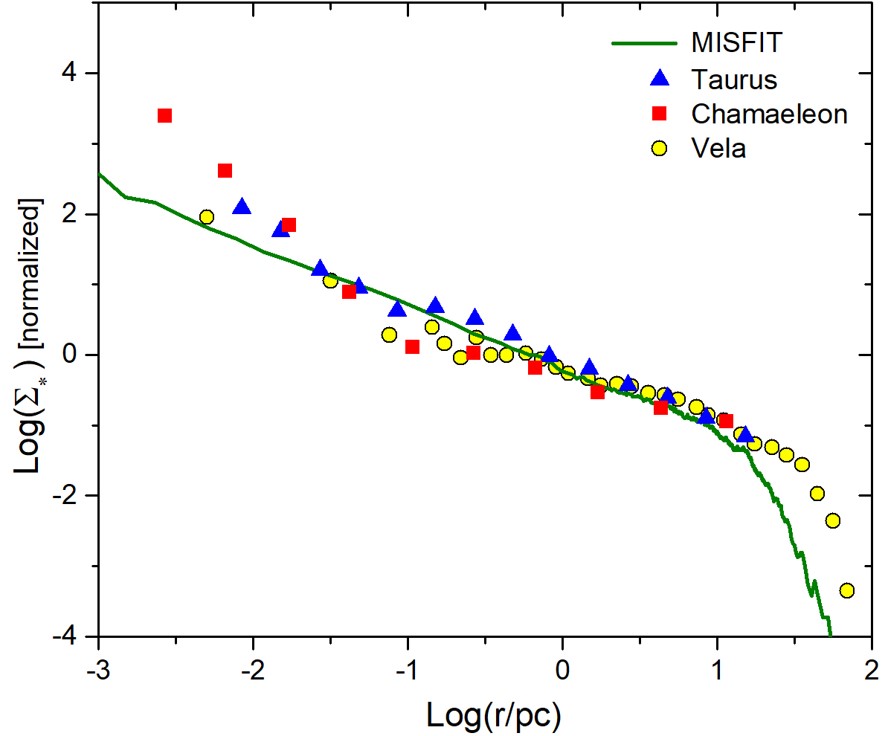
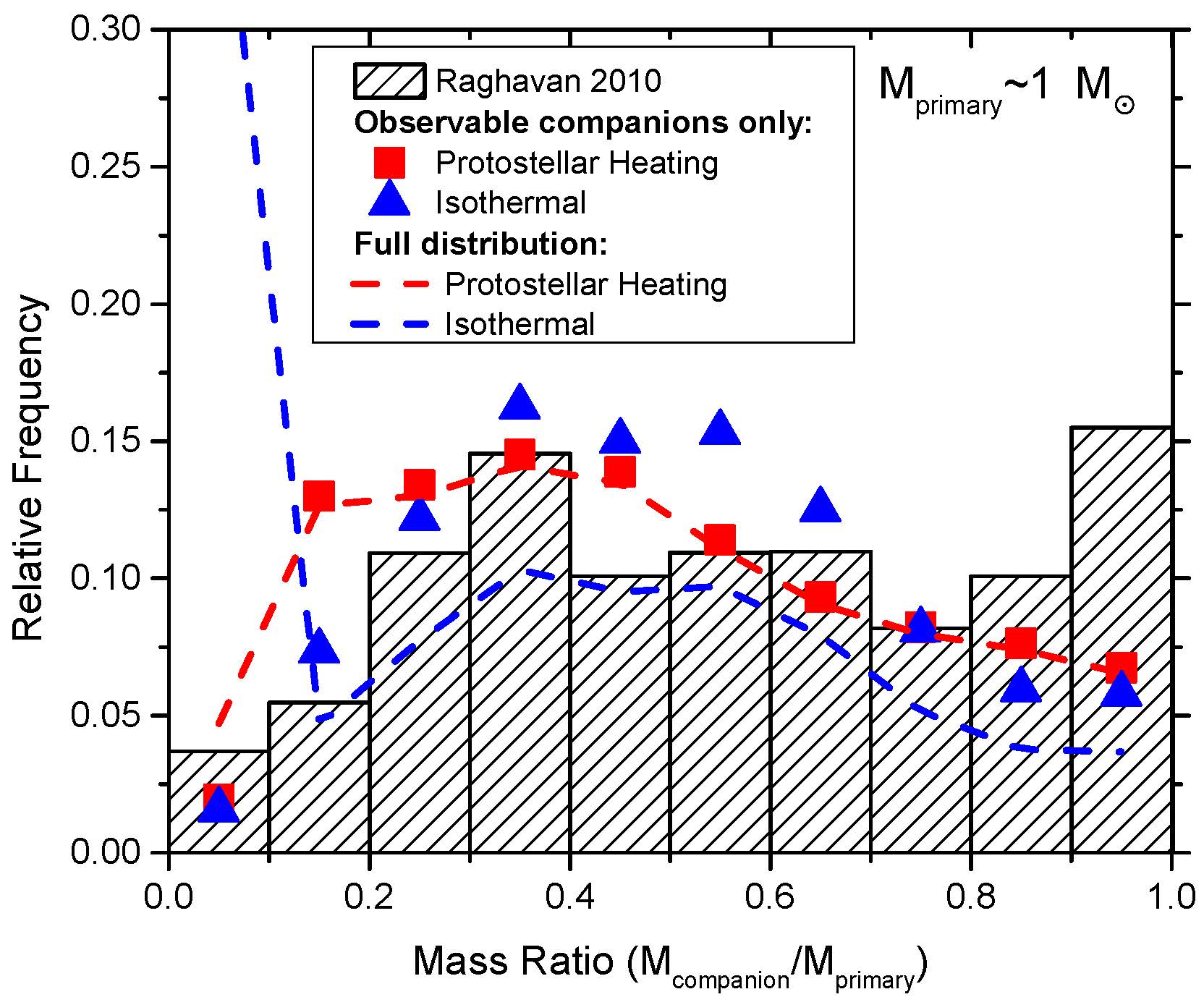
 Amanda Lue (2021)
Amanda Lue (2021)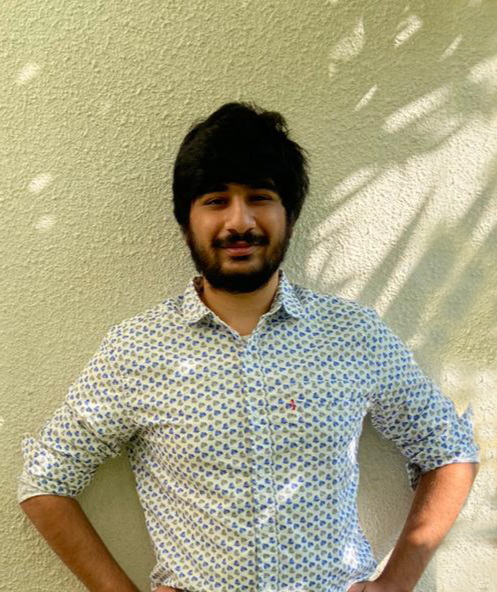 Aman Raju (2020-21)
Aman Raju (2020-21)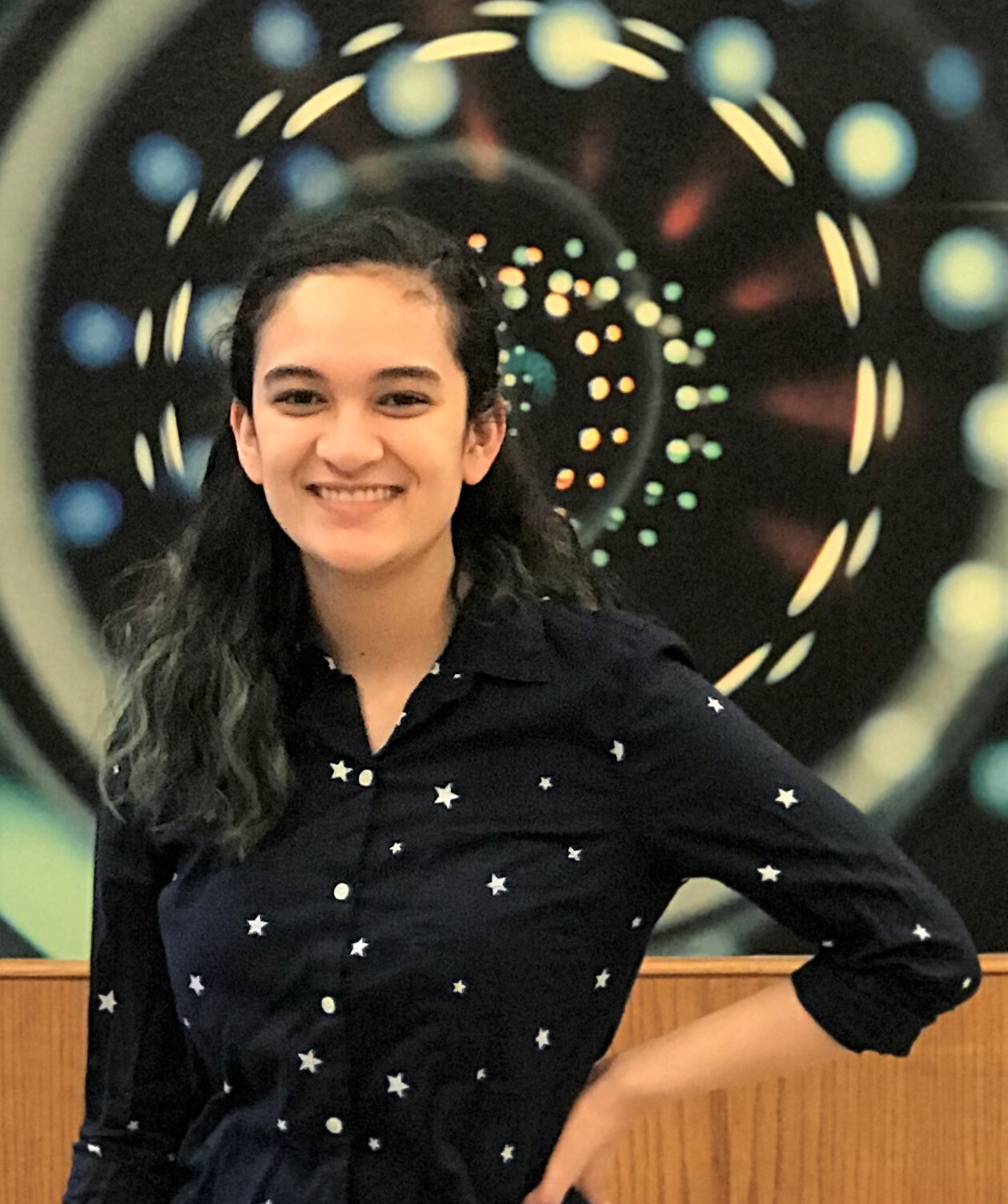 Carleen Markey (2020)
Carleen Markey (2020)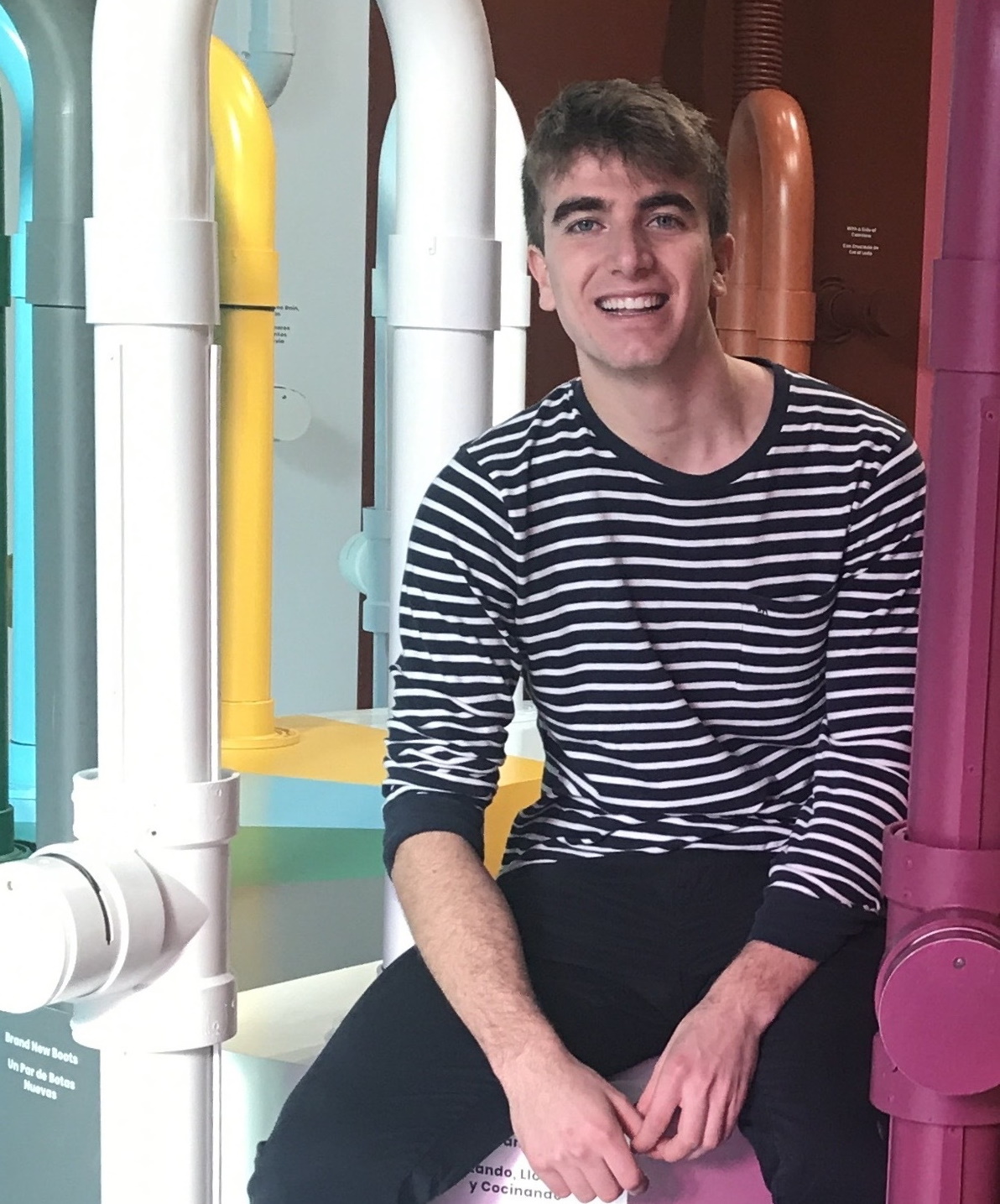 Enrico_Piperno (2019-)
Enrico_Piperno (2019-)